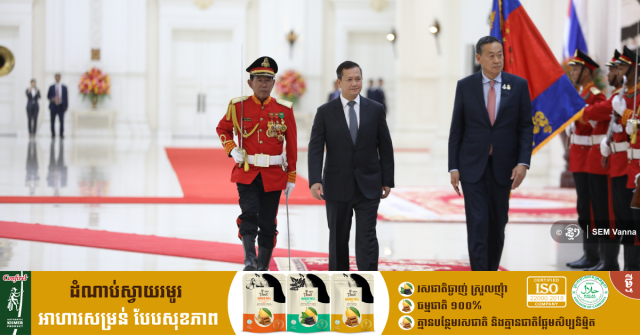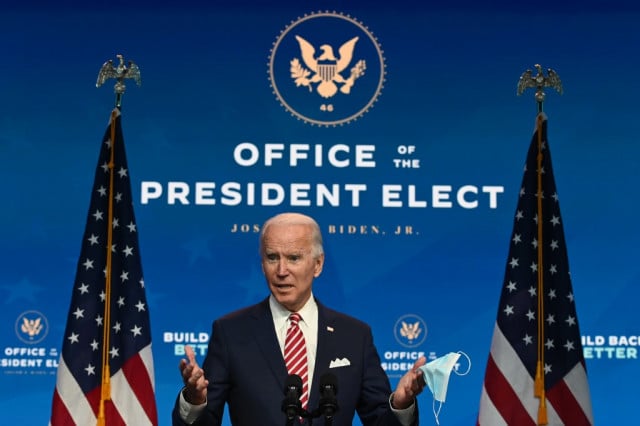Pregnant Women Seek Svay Leu Health Center Upgrade

- By Isa Rohany
- April 7, 2023 10:48 AM
SIEM REAP – Many pregnant women face being transferred moved to private and provincial hospitals to give birth, as the health center in Siem Reap’s Svay Leu district does not offer enough equipment.
Mothers experiencing difficulties have asked the government for more equipment to make it easier for the next patients, as the villages are far from hospitals in the city and the cost is high.
District resident Seng Chhorn is worried about her upcoming labor this month. She is concerned that it will be like her first labor when she had to give birth in a hospital in Siem Reap city because the Khnong Phnum Health Center in the district had inadequate maternity equipment.
The 24-year-old said she experienced a difficult birth for the first child, which was why she was worried about this second child.
During her first labor, the water broke but the baby was not born so the doctor decided to transfer her to the Jayavarman VII Hospital (Kantha Bopha Children’s Hospital III) in Siem Reap city because the health center did not have enough maternity equipment.
“It was cashew season, so I went to pick up some cashews, then my water broke when I arrived home. There was no pain. Arriving at the health center, the doctor said they couldn’t leave me there, so I was transferred to a hospital in the city,” Chhorn said.
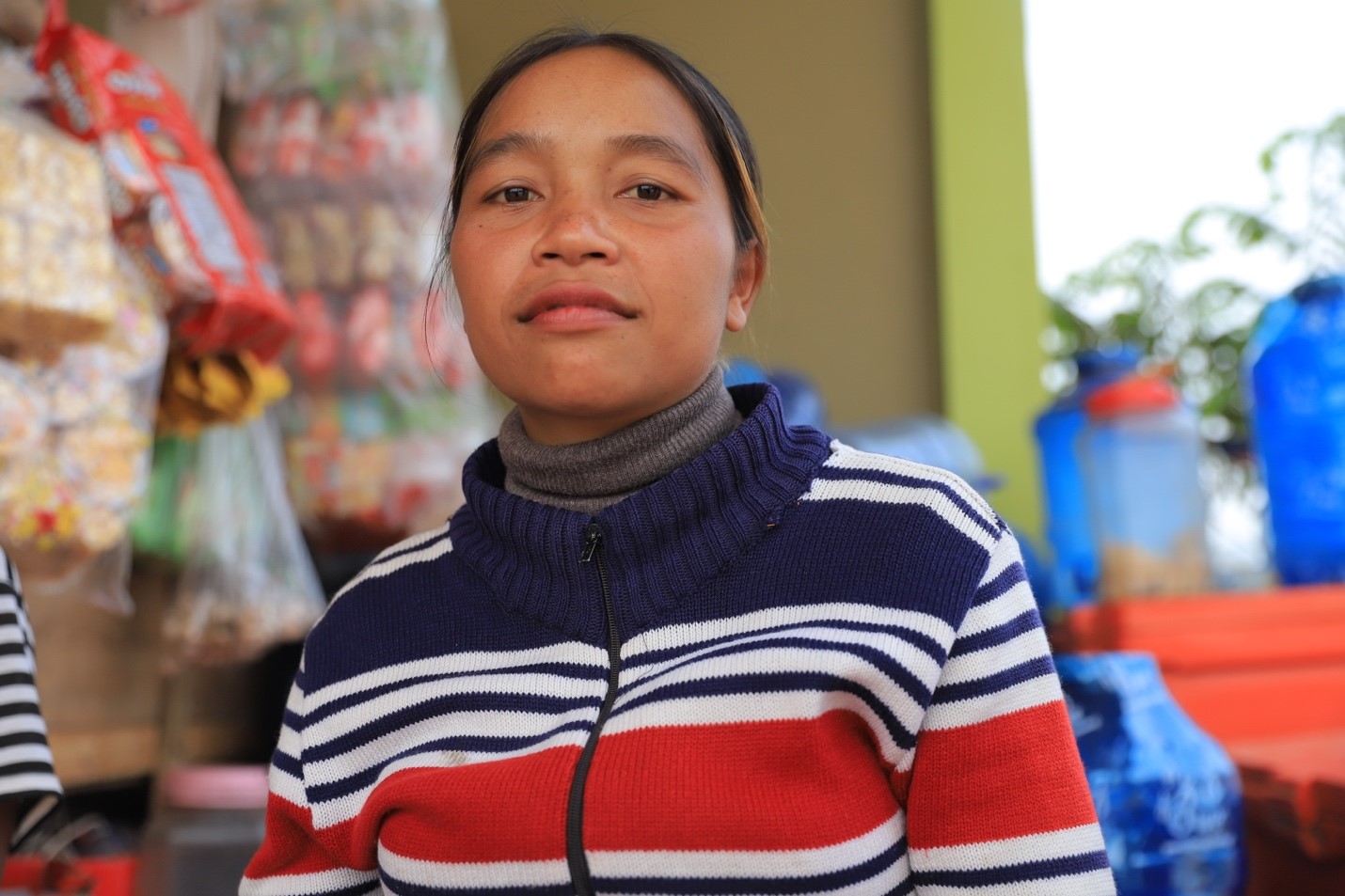 District resident Seng Chhorn is worried about her upcoming labor this month. Photo: Isa Rohany
District resident Seng Chhorn is worried about her upcoming labor this month. Photo: Isa Rohany
The baby was delivered by vacuum extraction because she was too weak to give birth.
The feelings she experienced have not faded even though five years have passed. Also, her financial situation is another concern for the family.
Previously, the family spent around 600,000 riel (nearly $150) on the ambulance (250,000 riel or more than $60) and other expenses during the one-night stay at the hospital. It was a lot for Seng Chhorn’s family.
Preparing for the same thing happening, she and her husband have been trying to save up.
“I have been preparing money. My husband works. I work,” she said.
“We can earn by digging canals for fence installing or weeding in farms. We’ll have to borrow from others in the meantime if we can’t earn.”
Between them, they earn only 50,000 riel ($12.5) per day. What is concerning is that it is not a regular job from which they can make money every day.
In a similar situation is Norn Neng, a mother of three of whom the youngest is seven months. She is still in doubt about her giving birth in Svay Leu Health Center.
“They took care of us for sure, but they didn’t inject me with any medicine,” she said.
“When I was in so much pain, I told the doctor I wanted an injection or a serum to fasten the giving birth process.
“The doctor, however, said he wouldn’t dare injecting me because he thought it would affect the baby in the womb. I was bearing the pain until the baby was born, then they injected a serum for me.
“After my labor, I often took my baby there for injections, and I saw the newcomers got serums, while I had nothing before. Was it because I didn’t have much money?” the 24-year-old said.
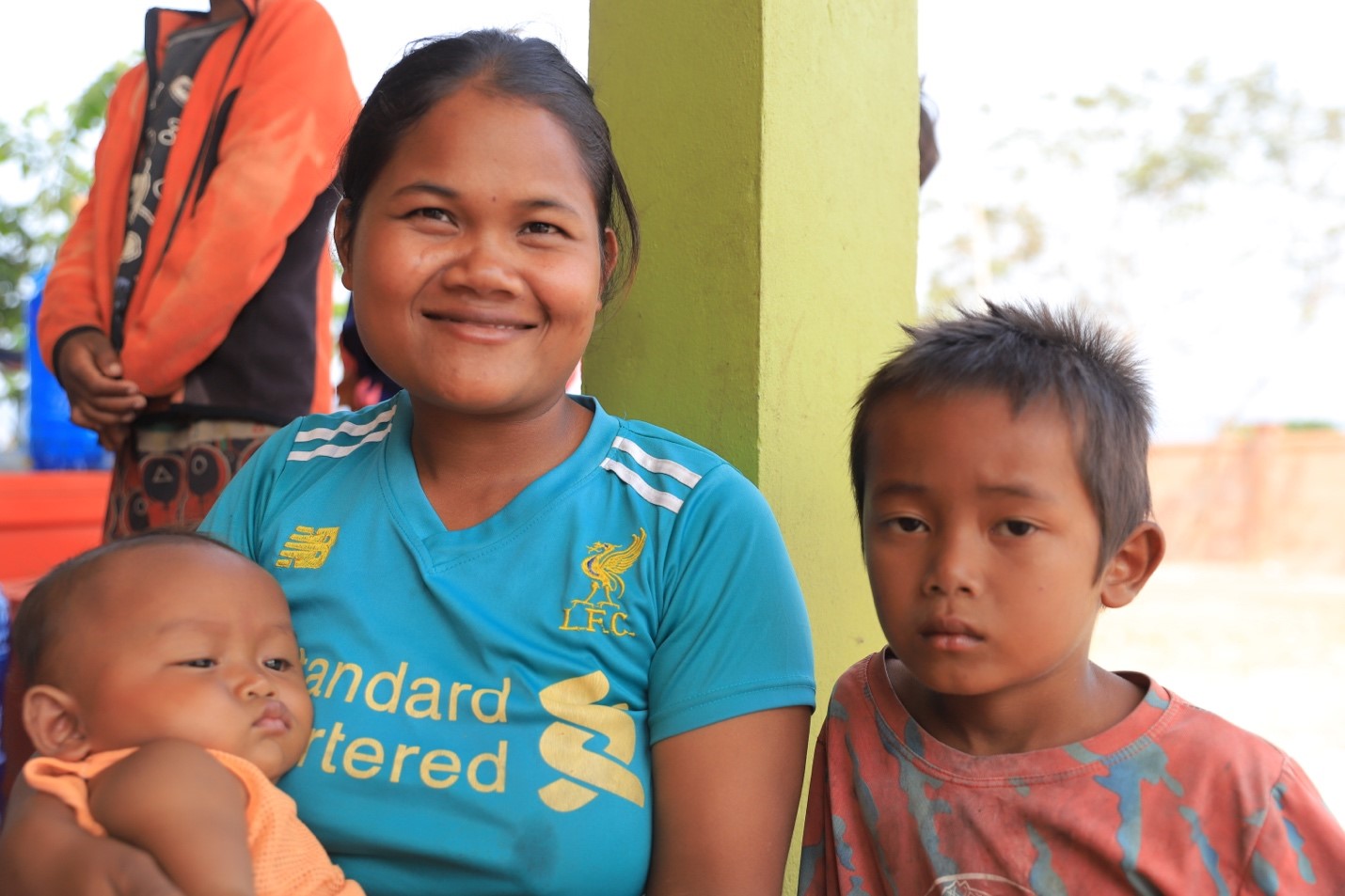 Norn Neng, a mother of three of whom the youngest is seven months. Photo: Isa Rohany
Norn Neng, a mother of three of whom the youngest is seven months. Photo: Isa Rohany
“I heard from my neighbors that we wouldn’t be taken care attentively unless we gave them some money.
“They gave others serums and medicines because their husbands were soldiers or had much money. While me? It wouldn’t be that easy for me. If I hadn’t tried by myself with the labor, it would have been so difficult.”
Neng said the birth of her second child, now aged five, was also risky because the local health center had neither enough services nor maternity equipment.
The second labor was a breech birth, and the doctor was trying to transfer her to a hospital, which her mother did not allow, as one of the baby’s legs was already out. The mother said she would have died by the time they arrived the hospital, Norn Neng recalled the moment.
“At the time, there was a midwife who was also expecting a baby, then she helped rubbing my belly to turn direction of the baby inside,” she said.
Unlike the other two, Voeung Lorn, a 30-year-old mother of three living in Ou Mean Chey village, said she did not experience hardship during her labor at the Health Center.
She received good service and attentive care with injection of serums normally from the doctors and nurses.
“I don’t know about others, but it was convenient for me because my husband is a well-known soldier,” she said.
Thoeub Salom of Boeng Mealea commune also gave birth at the Health Center which is a half-an-hour ride from home.
Having the ID Poor Card, Salom said she even received extra subsidy from the government during and after the labor in addition to good services, medicines, serums, bed, and other tools during her stay.
Mealea, however, had to move to Damdek commune in Soutr Nikom district where the villagers believe there are private hospitals for ultrasound and health checks.
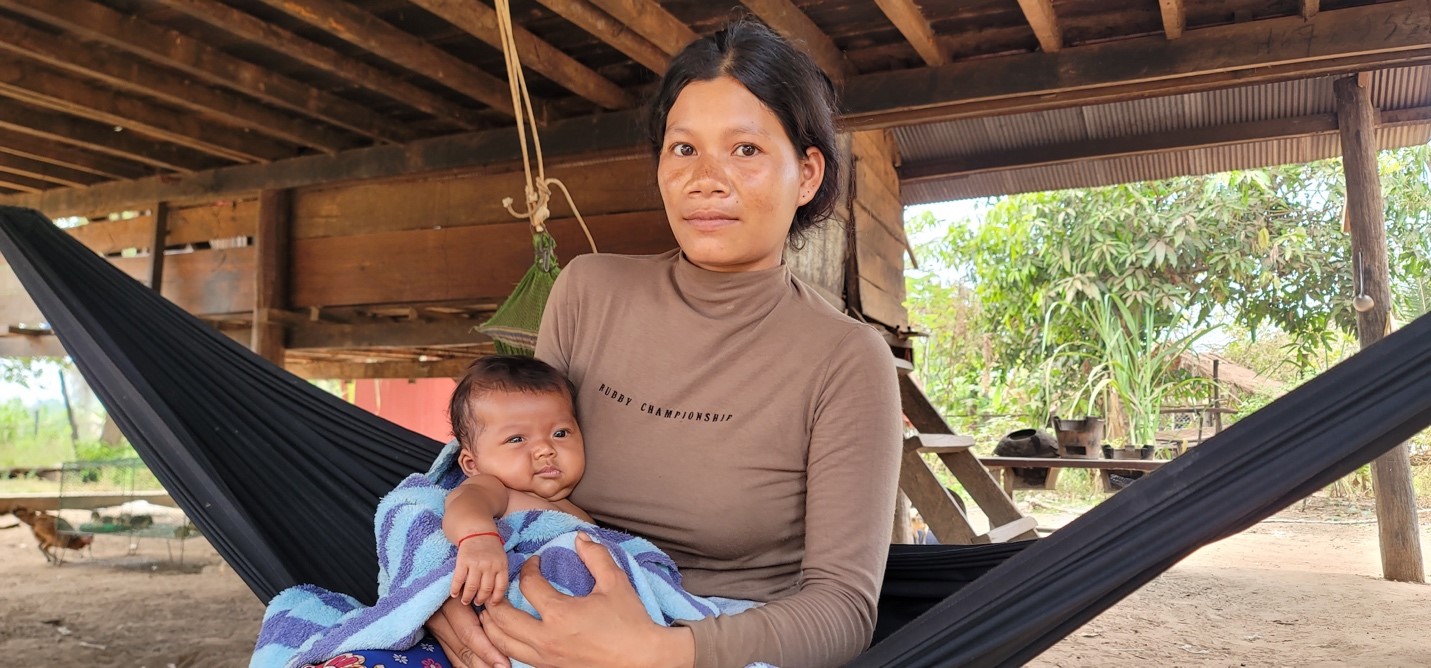 Thoeub Salom of Boeng Mealea commune also gave birth at the Health Center. Photo: Isa Rohany
Thoeub Salom of Boeng Mealea commune also gave birth at the Health Center. Photo: Isa Rohany
“I got the ultrasound check for a child of mine free of charge. The older children were checked at the hospital in Damdek commune, but only she was checked at the health center with the machine they had just operated,” the 27-year-old said.
“The checking service costed 20,000 riel ($5), the ride was 10,000 riel ($2.5), so it was around 40,000 riel ($10) to 50,000 riel ($12.5), including the food,” she added.
Requests for more services and maternity equipment
Despite having no difficulty during labor, Salom wanted the health center to also have an ultrasound machine, which would reduce other expenses.
Similarly, Seng Chhorn thought that having expert midwives and adequate equipment would be more convenient for other pregnant women. There would be no need to travel back and forth.
“I want nothing else other than the provision of medicines or serums to make it easier for the mothers giving birth. I want the [Svay Leu] Health Center to provide enough machines like the provincial health center or other health centers,” said another mother, Norn Neng.
Yoeun Sokha, the director of Svay Leu Health Center, said the services provided at the health center were equal and were not based on discrimination between the poor or rich. The center adhered to prices which were posted on the wall.
Regarding medicines and serums injection, the director said it was case by case. When the women bled or had a hard time pushing the baby out, there would be injections. The women in labor who were in a normal condition also got the serum.
For those who did not face any difficulty, the director said no serum needed for the process because it would cause the mothers difficulty.
“Delivering babies is the midwife’s job. They know whether the serum will be necessary or not,” Sokha said.
The doctors would vaccinate the mothers against tetanus, give them vitamins, iron supplements and additional counseling, as well as care or follow-up to prevent malnutrition and anemia.
Svay Leu Health Center gives treatment and low-level services to people in Svay Leu, Boeng Mealea and Ta Seam communes. About 500 to 600 patients, mostly women, are treated per month.
Eang Piseth, Svay Leu district governor, said there are health centers in Khnorng Thom, Svay Leu, and Kantuot communes for people in five communes, while the authority is seeking health centers for Boeng Mealea and Ta Seam communes.
To help ease the hardships, the provincial health department has provided a two-floor hospital building.
“in Svay Leu district geography, it is far from villages to each district, that is why we are trying to connect the roads, making it faster for people travelling,” Piseth said.
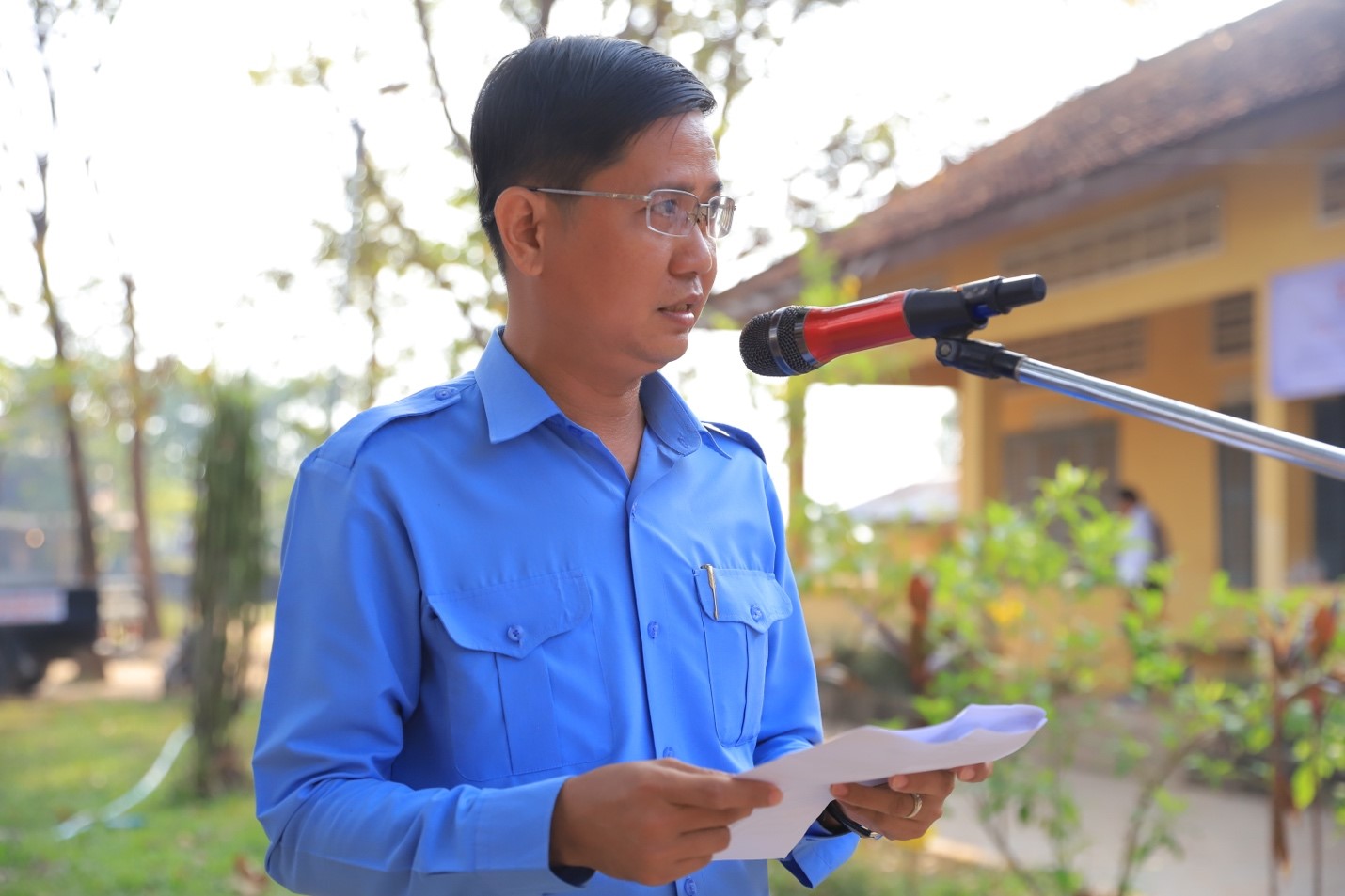 Eang Piseth is Svay Leu district governor. Photo: Isa Rohany
Eang Piseth is Svay Leu district governor. Photo: Isa Rohany
“Especially we are also reaching out to the two communes in where there are no health centers yet.”
Svay Leu district is 80 kilometers from Siem Reap city.
Kros Sarath, the head of Siem Reap provincial health department, said four district hospitals were operating, in Soutr Nikom, Kralanh, Angkor Chum and Puok districts. The hospitals are secondary level, which are not specialization level.
Sarath said there were 94 health centers, located in 100 communes.
“We nearly have health centers in every commune because the population in the districts with no health center is yet to be enough to build a health center for,” Sarath explained.
According to policy of Health Ministry and Ministry of Economy and Finance, the population required for a health center is from 8,000 to 12,000, but there were exceptions if necessary.
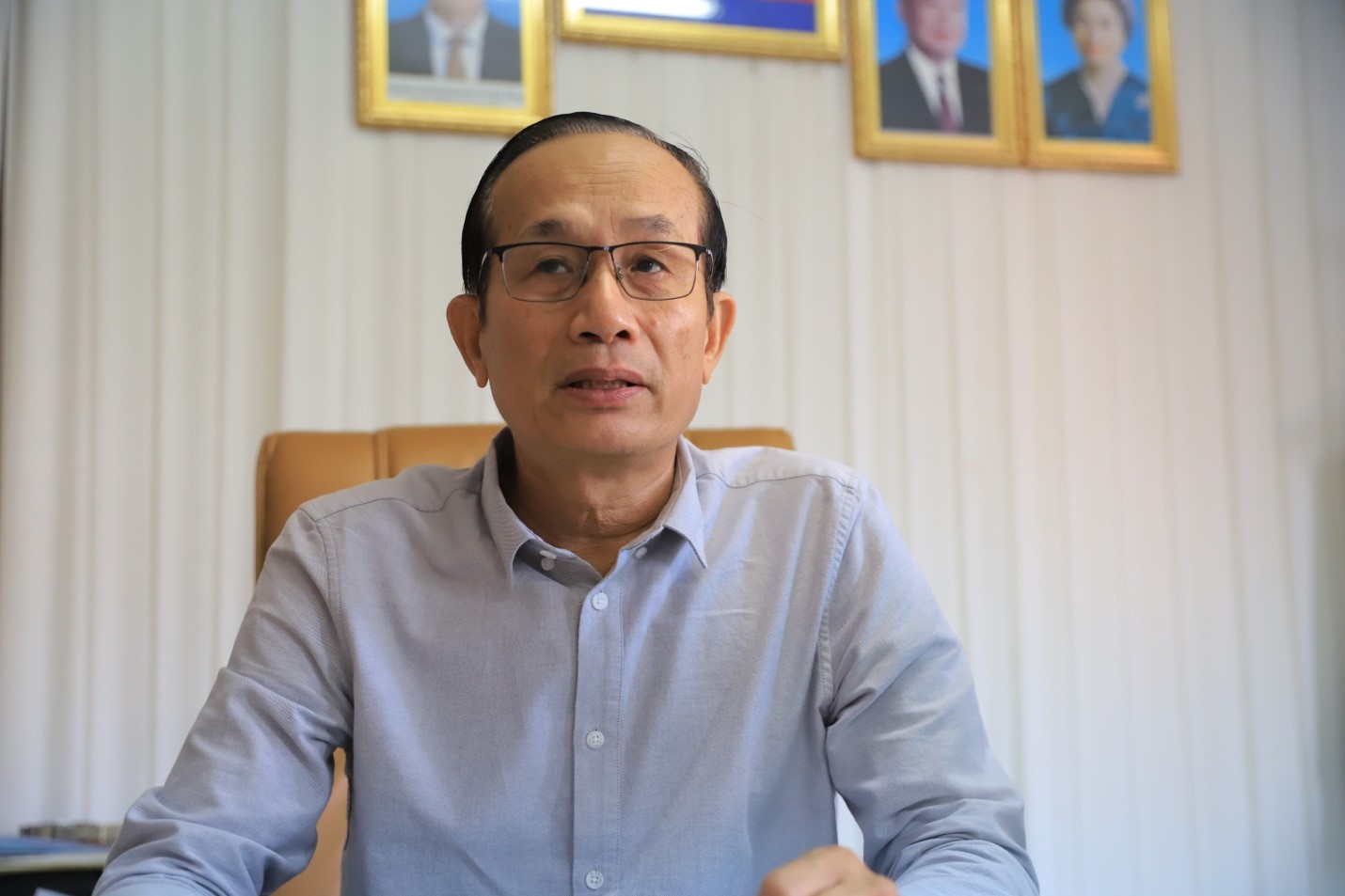 Kros Sarath, the head of Siem Reap provincial health department, said four district hospitals were operating, in Soutr Nikom, Kralanh, Angkor Chum and Puok districts. Photo: Isa Rohany
Kros Sarath, the head of Siem Reap provincial health department, said four district hospitals were operating, in Soutr Nikom, Kralanh, Angkor Chum and Puok districts. Photo: Isa Rohany
Svay Leu district has nearly 8,000 people (1,800 families) in Boeng Mealea commune, and there are over 9,000 people (more than 2,000 families) in Ta Seam commune. Each commune nearly meets the standard.
Sarath said building the health center would not be a problem, but the expenses and materials would raise concerns.
“The district administration may help with seeking funds from donors for the building, but we would need supplies, including staff, medicines, medical equipment, and supporting budget from the Ministry of Economy and Finance,” he said.
“If we don’t meet the requirement, the ministry won’t approve it.”
Dr. Or Vandine, spokesperson for the Health Ministry, said the government has been trying, step by step, to enhance the health service in response to people’s needs, particularly in health centers.
“We will consider strengthening service capability in health centers. We will also find means to enable each health center to treat health problems for the people in each community,” she told ThmeyThmey on Feb. 23.
Dr. Vandine said the work could only be done with the participation of the local authority, health officers and the community. The health Ministry is also thinking about preventing the spread of infectious and non-infectious diseases by providing health education.
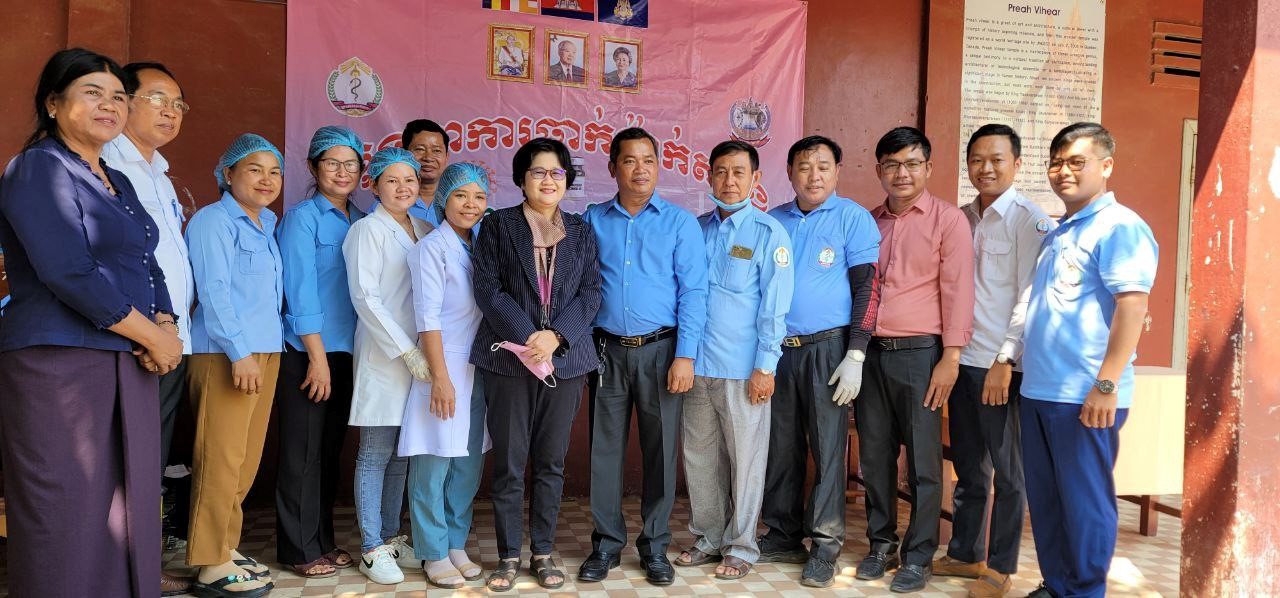 Dr. Or Vandine, spokesperson for the Health Ministry, said the government has been trying, step by step, to enhance the health service in response to people’s needs, particularly in health centers. Photo: Isa Rohany
Dr. Or Vandine, spokesperson for the Health Ministry, said the government has been trying, step by step, to enhance the health service in response to people’s needs, particularly in health centers. Photo: Isa Rohany
She did not speak about the national spending on health but said, “I think the government pays attention on this matter, and they will increase the budget.”
Dr. Mengly J Quach, the founder and chairman of MJQ Education, said the health sector in Cambodia has improved for the last four to five years, which is the result of the government’s attention to the sector.
However, the deficiency is the lack of training in health centers where people complain about poor quality.
Dr. Mengly, who also used to criticize health sector quality, praised improvements but said he wanted the government to enhance training on professionalism and expertise which were still poor.
“Some doctors can’t find a place for practice while some places to gain practical experience are not complete, making it impossible for medical students to fully practice, which leads to risks and harm for patients,” he said.
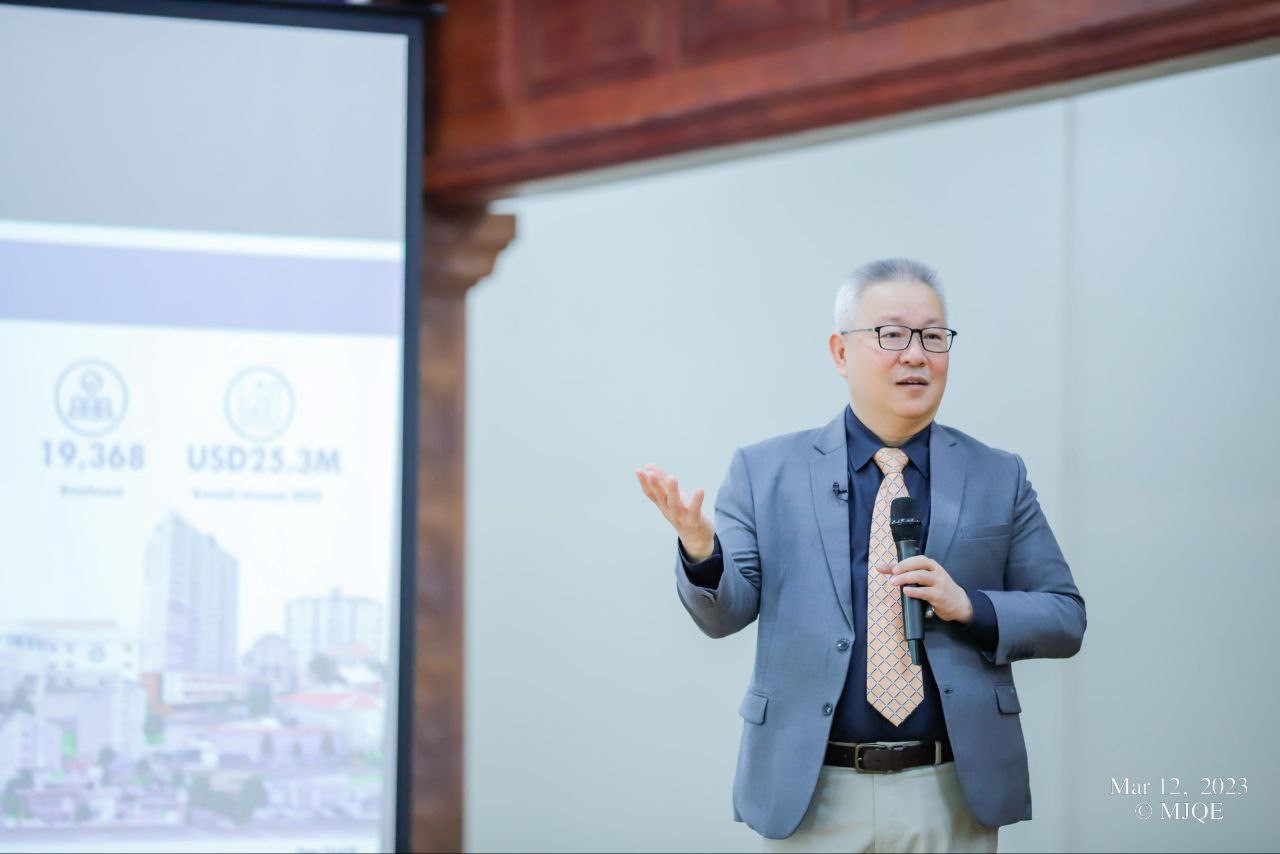 Dr. Mengly J Quach, the founder and chairman of MJQ Education, said the health sector in Cambodia has improved for the last four to five years. Photo: Mengly J Quach
Dr. Mengly J Quach, the founder and chairman of MJQ Education, said the health sector in Cambodia has improved for the last four to five years. Photo: Mengly J Quach
Prime Minister Hun Sen also spoke of quality and professionalism in the health sector, during the conference on the summary of the Health Ministry’s work for 2022 held on Mar. 7.
The Prime Minister called on stakeholders to improve and strengthen the services as well as to prioritize patients’ lives above other things in accordance with the job ethic and the provision of treatment and services.
PM Hun Sen also advised the Health Ministry to strengthen training in the health sector, including soft and hard skills by updating regular study programs to promote ethics.
The national health budget has seemed to decrease even though the government has been committed to improve the sector.
San Chey, the executive director of the Affiliated Network for Social Accountability, said it declined by $1.8 million, or 2 percent, compared to 2022.
San Chey, however, said the decline seemed to result from the change of government budget priorities after the improved situation of COVID-19.
On the other hand, the decrease was in contrast of the government’s determination for prioritizing health sector and of the estimated six percent increase in economic growth this year, according to the NGO’s report issued on Mar. 31.
As for the Svay Leu Health Center, its income decreased by 345 million riel, or around $85,155, in 2022 which is 87 percent decline compared to 2021, according to the ISAF M&E Database System.
The national budget provided was only 24 million riel, or nearly $6,000, in 2022 while it was more than 303 million riel, or almost $75,000 in 2021.
How will the local health sector be enhanced?
The director of Svay Leu Health Center, Youen Sokha said one health center for one commune would be easier than one center for people in three communes, as it would make travel smoother.
Dr. Mengly also requested more local inspections and authorization to follow up with the use of medicines, checking services and treatments in health centers.
San Chey focused more on infrastructure of health centers, to guarantee clean water, enough electricty, medical equipment, and other safety systems.
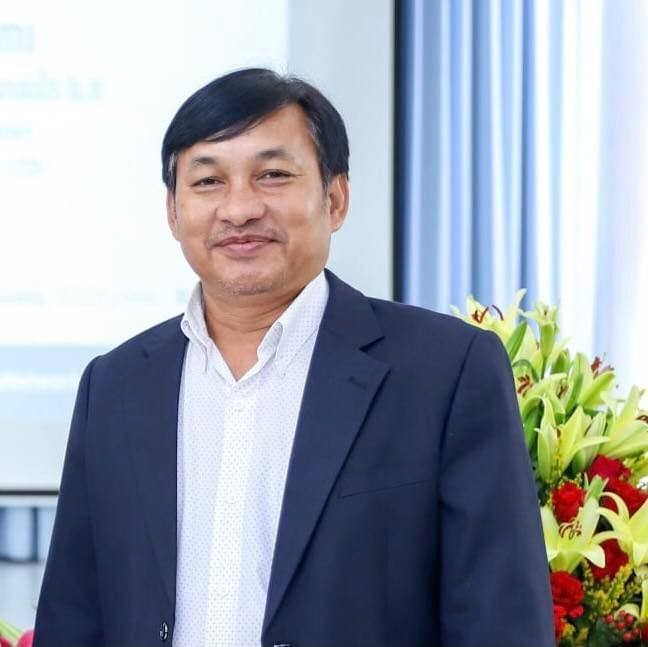
San Chey, the executive director of the Affiliated Network for Social Accountability, said it declined by $1.8 million, or 2 percent, compared to 2022. Photo: San Chey
Another resolution is to locate a health center, the commune/district service provision and police station next to each other.
“In addition, we’d like to see the national budget allocated to get to the health center to become a place with adequate facilities and medical professionals, gaining the patients’ trust on service provision,” he said.
In mid 2019, the government established a policy of cash transfer for pregnant women and children under two. The Minister of Social Affairs, Veterans and Youth Rehabilitation Vorng Sauth said on Feb. 8 that the program has provided for around 250,000 women and children, at a cost of $17 million, from 2019 to 2022.
The 2022 annual report of the Siem Reap Provincial Administration showed that the cash support in communes on pregnant women and children under two was around $420,000.
Although to improve local people’s welfare, the policy has not responded to many of them yet. What people want more is quality health services that meet their daily needs.
A report on the ISAF M&E Database System showed that only 30%, out of 228 pregnant women in the three communes gave birth at Svay Leu Health Center in 2022.
The figure also showed that local people, especially pregnant women, do not have trust in health centers yet, as people from average families would go to private hospitals while the poor would prefer the Jayavarman VII Hospital with enough equipment and experts.
According to the summary report of the Kantha Bopha Hospital in 2022, more than 20,000 pregnant women delivered babies at the hospital.






